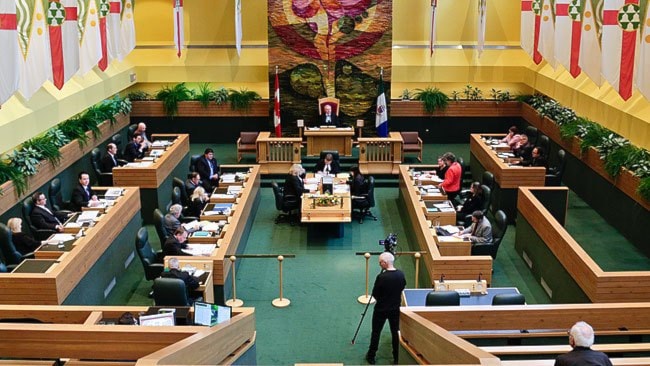The unexpected $23-million cut to the Yukon’s transfer payment was fodder for much eggnog-fueled philosophizing over the holidays.
Three schools of thought emerged around the eggnog bowls I frequented.
The first is what you might call the “territorial patriot” school. These Yukoners view the cut through the lens of the territorial interest. Who cares if even the reduced level is generous compared to what Alaska gets? Or six times what P.E.I. gets on a per capita basis? And who cares if we spent it having the most government public relations jobs per capita on the planet? The cut is as bad for the Yukon as a 200-employee mine closing, and should be fought with an aggressive fore-check in Ottawa by our MP, senator and premier.
Let’s call the second group “bemused realists.” They can be heard around the eggnog bowl mocking the Yukon government for its defiant call to arms and proclamation that it would fight in the trenches to the last drop of policy analyst blood to get Ottawa to reverse its decision (well, they didn’t exactly say “trenches” or “blood” but it did involve a Twitter salvo). Forget “aux armes, citoyens!” say these Yukoners to the Yukon government, and remember that even after the cuts you’re still getting $930 million (or $24,333 per Yukoner). Get on with governing and spending what you do get wisely.
Often the realists will then list some Yukon projects that they think undermine the ability of the Yukon’s new paid lobbyists from Temple Scott Associates in Ottawa to portray us as hard done by. Spending $200 million to twin the Alaska Highway through Whitehorse is one of the more popular examples, it seems.
The third group includes some people who have been in the Yukon a very long time, and those who think the name of the Yukon game is extracting money from Ottawa might find their thinking a little subversive to the status quo. Let’s call them the “self-reliant pioneers.” These people can be heard saying things like, “it’s good the transfer got cut; it will force us to try a bit harder to develop a private-sector economy.” They want the Yukon to develop into a self-sustaining jurisdiction over the next 50 or 100 years, perhaps like Alaska or Saskatchewan did back when they were territories.
The pioneers tend to be worried that if the Yukon government is forever relying on Ottawa for 84 percent of its revenue, we will always be a ward of the feds. These Yukoners also worry that, if the Ottawa-funded public service is such a big percentage of the population, there will never be enough political support for economic development that involves mines, pipelines, natural gas or even less controversial things like resorts on undeveloped wilderness land.
“In 20 years if the transfer payment keeps going up we won’t be electing the premier of the Yukon,” muttered one pioneer darkly, “but the chief park ranger.”
This split makes us a bit different from jurisdictions like, say, Quebec. If the feds announce cuts in Quebec, I defy anyone to find a Quebecer of any political persuasion that will side with Ottawa.
We shall see how the three schools of thought evolve as the consequences of the cut filter through into the real world (assuming it is not reversed). Many Yukoners have become used to steady, significant increases in government spending every year.
In the fiscal year ending in 2008, the first year in the handy historical data on the federal Finance website, we received $576 million. This fiscal year it was $923 million. That’s an increase of $347 million in just eight years. Our transfer went up six per cent a year on average. In four years during that period, the Yukon government had to figure out how to spend over $50 million more than it did the previous year.
No wonder deputy ministers always look exhausted.
The key figure is that six per cent annual increase. Two percent of that goes to feeding the beast, which is bean-counter slang for how inflation means you need to spend more just to keep existing staff and budgets at the same “real” level. That still left a healthy four per cent for shiny new spending ideas.
This is what is changing now. After the cut, the transfer will grow a measly 0.76 per cent next year, likely less than inflation. The beast will have to go on a diet.
Your favourite capital project may get cut, delayed or “re-scoped” into oblivion. Grants to your community group might get harder to come by. And your spouse or child may find it harder to get a government job if there are hiring freezes.
If any of that starts to happen, polite philosophical debates about federalism and fiscal policy will go out the window. All three groups will be hopping mad. The only thing they’ll be debating at that point is who to blame.
Keith Halliday is a Yukon economist and author of the MacBride Museum’s Aurore of the Yukon series of historical children’s adventure novels. He won this year’s Ma Murray award for best columnist. You can follow him on Channel 9’s Yukonomist show.
